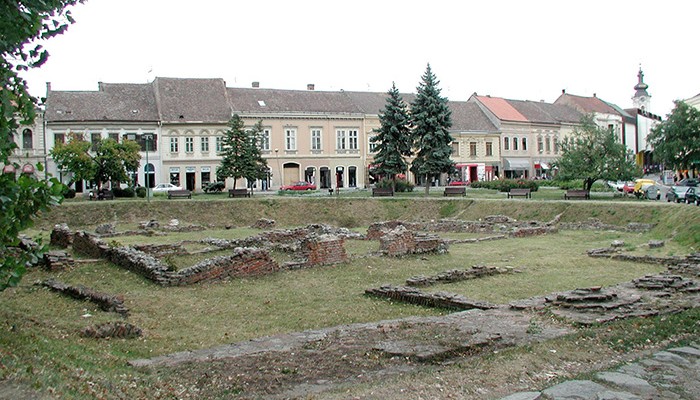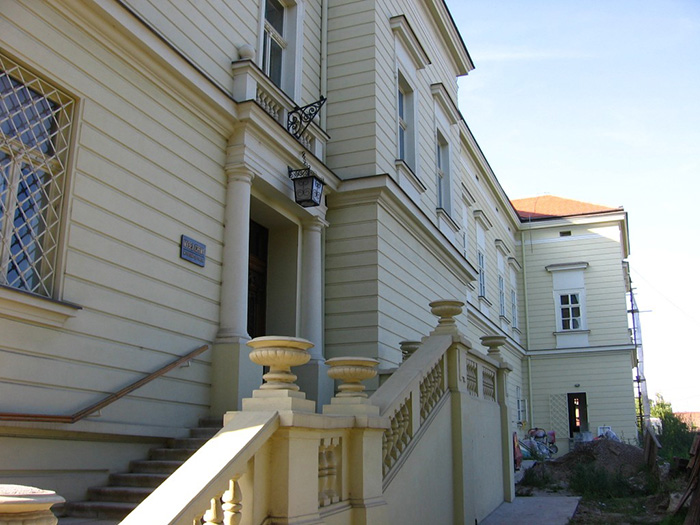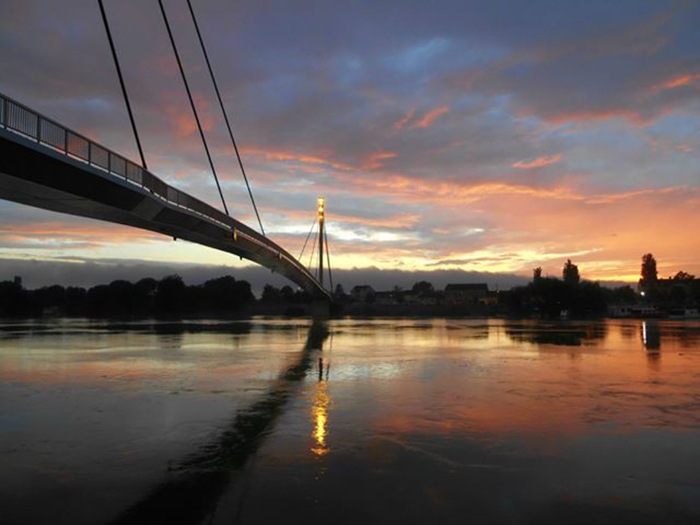
Six Roman rulers were born in Sremska Mitrovica, in one of four capitals of the Roman Empire. Due to its seven thousand years old history it is considered one of the oldest towns in Europe.
Just like Rome, Sremska Mitrovica is situated on seven hills and in the most famous building in this town – Imperial palace (Sirmium Palatium Imperiale), five famous church councils were held and the most important conclusions on recognition of Christianity on the territory of the Roman Empire were brought there.
Wherever you dig under surface of this town on left bank of the Sava river you will find treasure from past centuries. When in the seventies in the last century in the centre of Sremska Mitrovica, between two baroque buildings a shopping centre was built (a real example of socialistic architecture), 33 unique gold coins were found, which is considered a proof that there was a coin mint. The data say that this mint coined around 2700 tons of gold, so -the locals joke – Sremska Mitrovica is a real bait for “bandits” with metal detectors who walk around and search for gold.
What do Louvre, Metropolitan and Sremska Mitrovica have in common?
As there are numerous treasures hidden under this town, it could be fruitful for some, just as it almost was for three youngsters who found Avar golden belt from the 7th century in the vicinity. They sold it but could not agree on how to divide the money. Luckily, because of their fight the gold belt of this nomad tribe was returned where it belongs – to Srem Museum – where many other archaeological findings are kept. One of the most significant is surely the Sundial, which can be seen in lapidary. It was made one hundred years before Christ from white Brač marble by order of Kratilo Papio, one of the richest inhabitants of the then Sirmium. The statue represents Atlas who carries a sundial on his back, and behind his back there are is brothers Hercules and Iphicles. It is unique in the world as it is the only one that depicts Hercules’ brother Iphicles. His image, until the discovery of this sculpture was to be found only on vases, and the vases were owned by the French Louvre and New York Metropolitan, which – logically – tried to purchase this statue.
The inhabitants of this town were advanced, which Žitni trg testifies. The place where once agricultural products were sold the archaeologist found valuable findings, remains of a Roman house with sewage. The story says that a 14 meters high aqueduct lead from the southern slopes of Fruška gora to the town centre where the mentioned square is, and this aqueduct existed until fifties in the last century, when town authorities decided to pull it down and use the material for construction of something else. There was an architect who was against that idea, but he suddenly disappeared under strange circumstances.
He opted for Instanbul at the last moment
The emperor Constantine I the Great, Roman emperor who converted to Christianity, adored Sremska Mitrovica. Even though he was born in Niš, he spent most of his time there and brought most of his decisions there. He was thinking of making an imperial town in Sremska Mitrovica, but then he changed his mind and went to Istanbul. The palace where he sat is a number one tourist destination today. It is specific because rich archaeological findings were covered with roof, which makes this space unique in the world. There are remains of magnificent mosaics everywhere, but also underfloor heating. Yes, you read well – in 3rd century, apart from sewage there was also underfloor heating which surprises all visitors who come to visit this unique space throughout the year. Today it is open for different cultural manifestations, flower shows, festivals…There you can see the model of the then Sirmium, and what draws much attention is the big hippodrome, third in size of its grandstand in the world just after the Roman and the one from Constantinople, from the Old Roman empire. From the palace to the hippodrome there was a secret passage. People wanted to see their beloved emperor from time to time, and he came to them through this passage.
The longest hanging pedestrian bridge in Europe
Even though it is located on the left bank of the Sava river, this town actually does not live on the river as it should. When staying in Sremska Mitrovica, Yugoslav general Tito was so delighted with the area around the river that he called the town Briuni of Syrmia. Over the river there is an impressive and the longest hanging pedestrian bridge in Europe. It is St. Irineis bridge, 262,5 m long, which connects Sremska and Močvanska Mitrovica. These two places used to be connected by unfunctional bridge which was far away from the centres of both places. The idea of investors and constructors, who started building it in 1990 and finished it within three years, was to connect the centres of both places and their inhabitants. You can see the belfries of all three churches in Sremska Mitrovica from just one spot on the bridge. The spot is not marked, the guests have to find it by themselves and it is a big challenge for them.
The whole history in just a few meters
Walking over Žitni trg to Carska palača (Emperor’s palace) and the river Sava it will become clear that within these few hundred meters the whole history of one town is situated – from prehistoric people, to the Romans, Ottomans (there used to be 17 mosques here), Habsburg Monarchy, the Kingdom of Serbs, Croats and Slovenians, Yugoslavia …
There is so much to see, and as an illustration for the end and the best invitation to visit Sremska Mitrovica there is the legend on how Syrmia originates. Namely, when God created the world and divided it, a Syrmier was held up in a tavern and did not come on time. God did not know what to give him, because he had already distributed everything, so he decided to give him his piece of Heaven. It is really worth exploring throughout the year, and especially in spring, when – as the locals say – it is the most beautiful.



